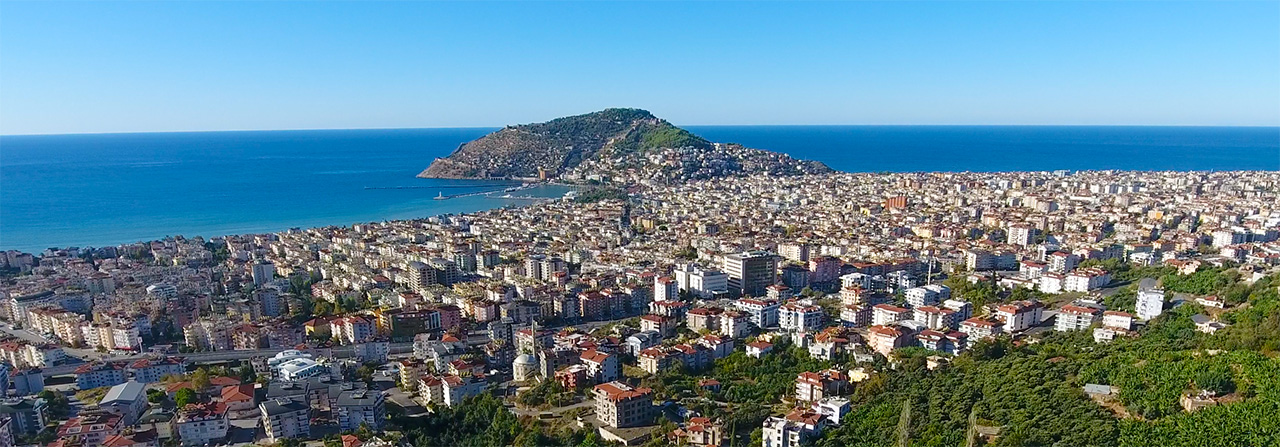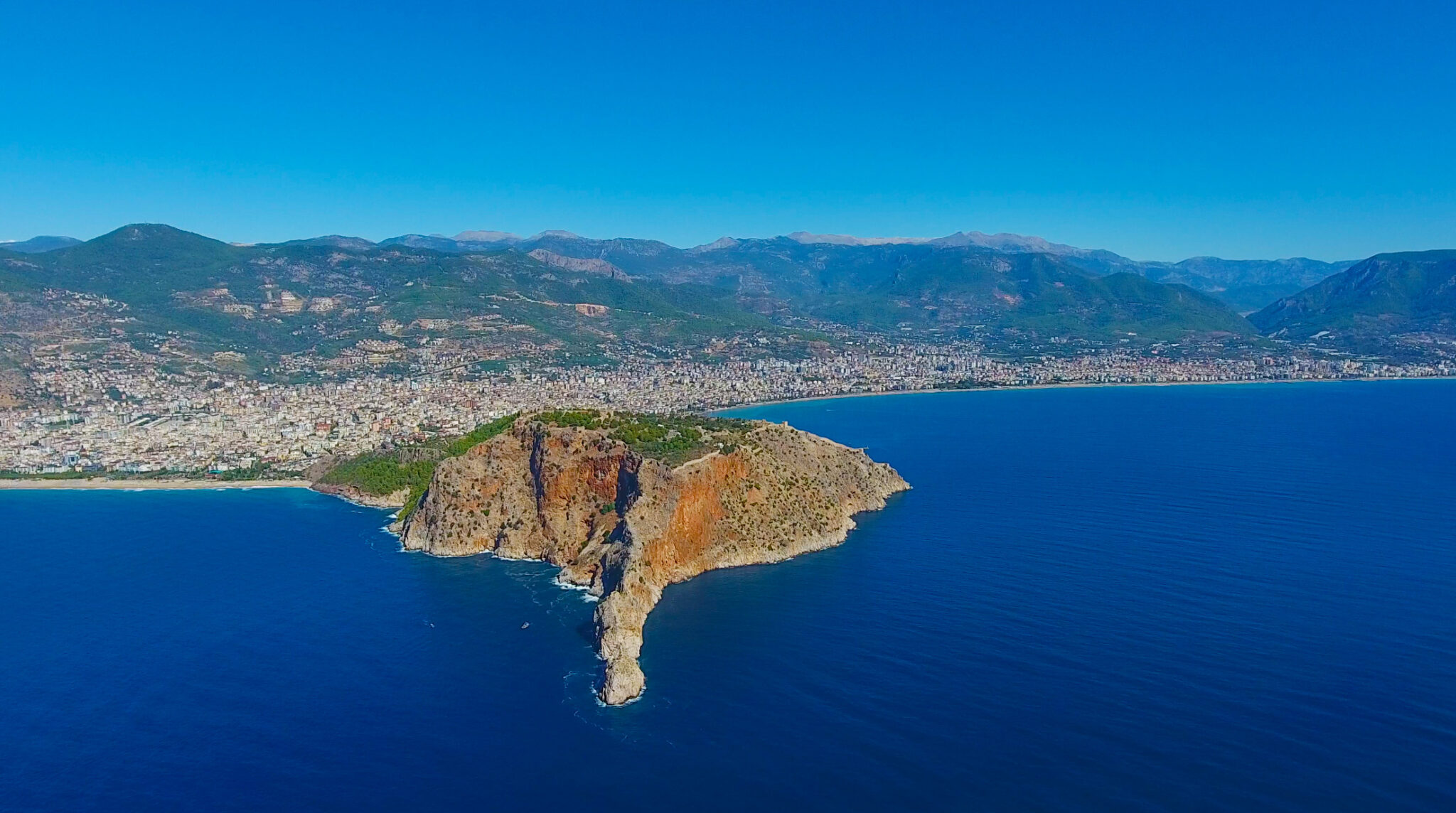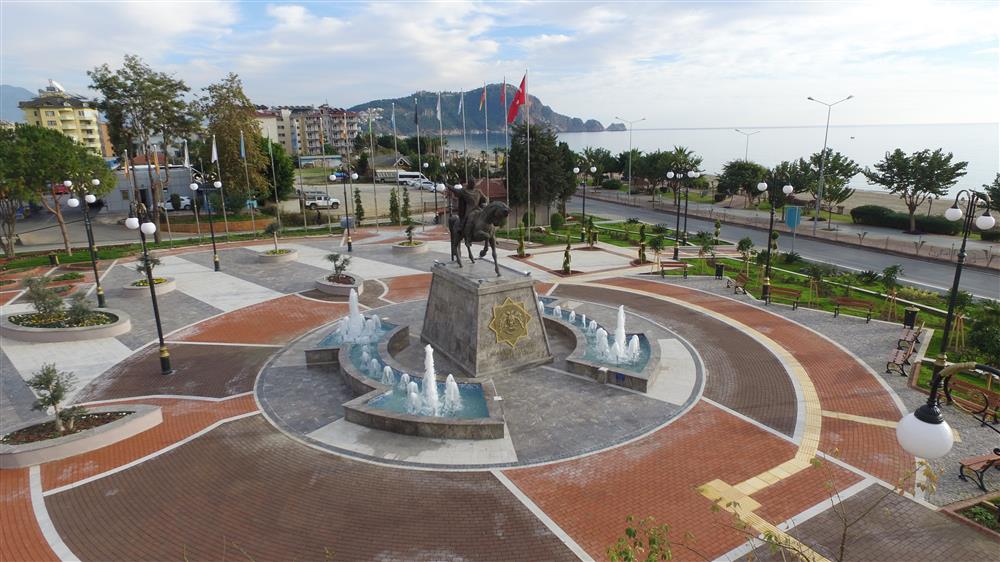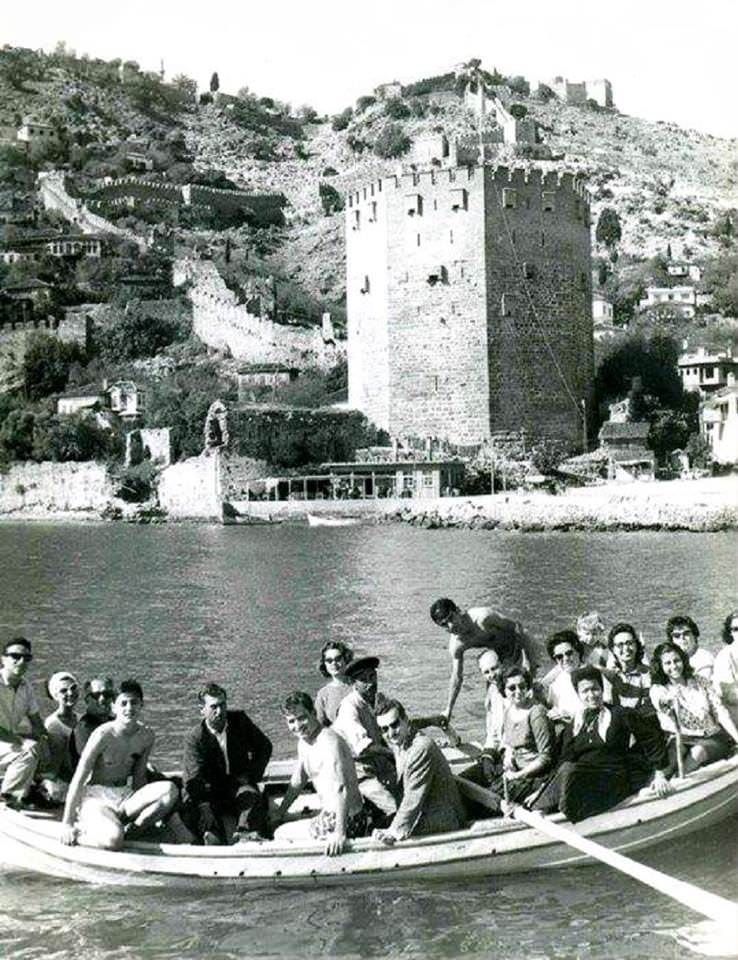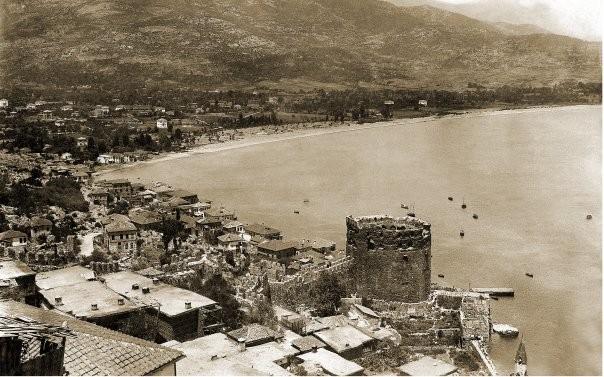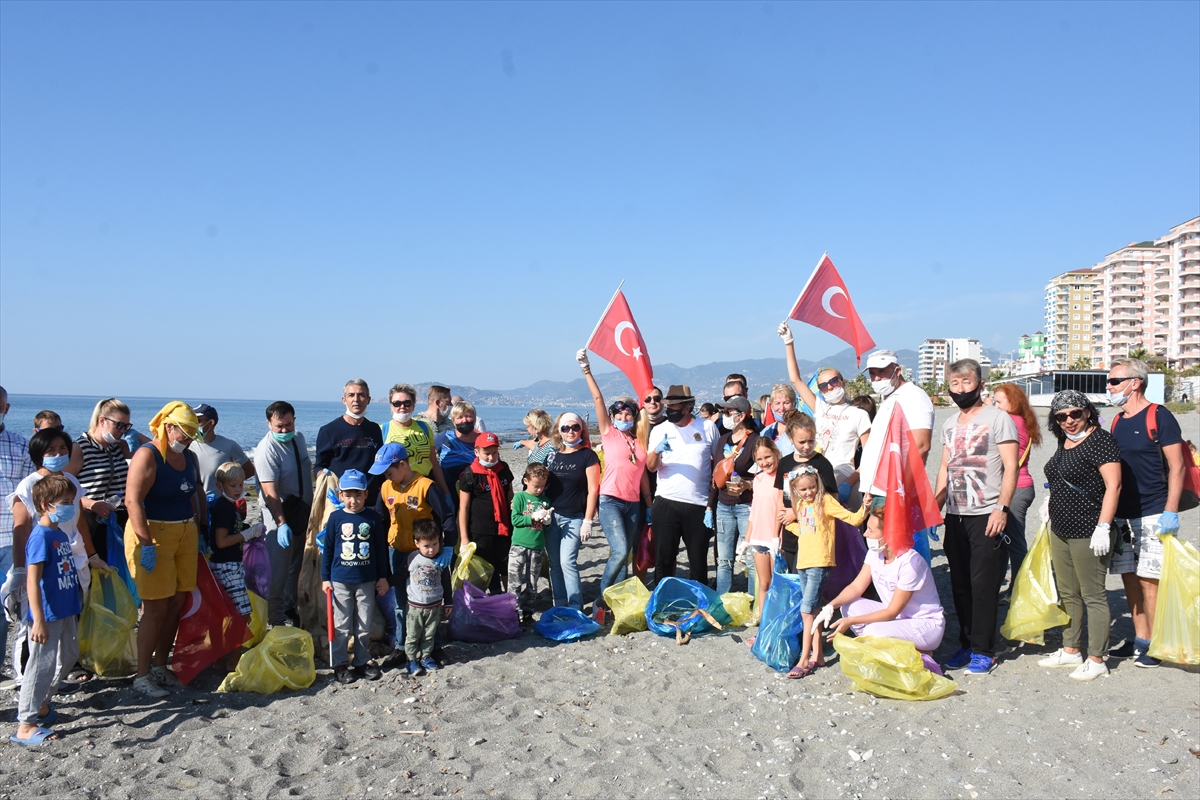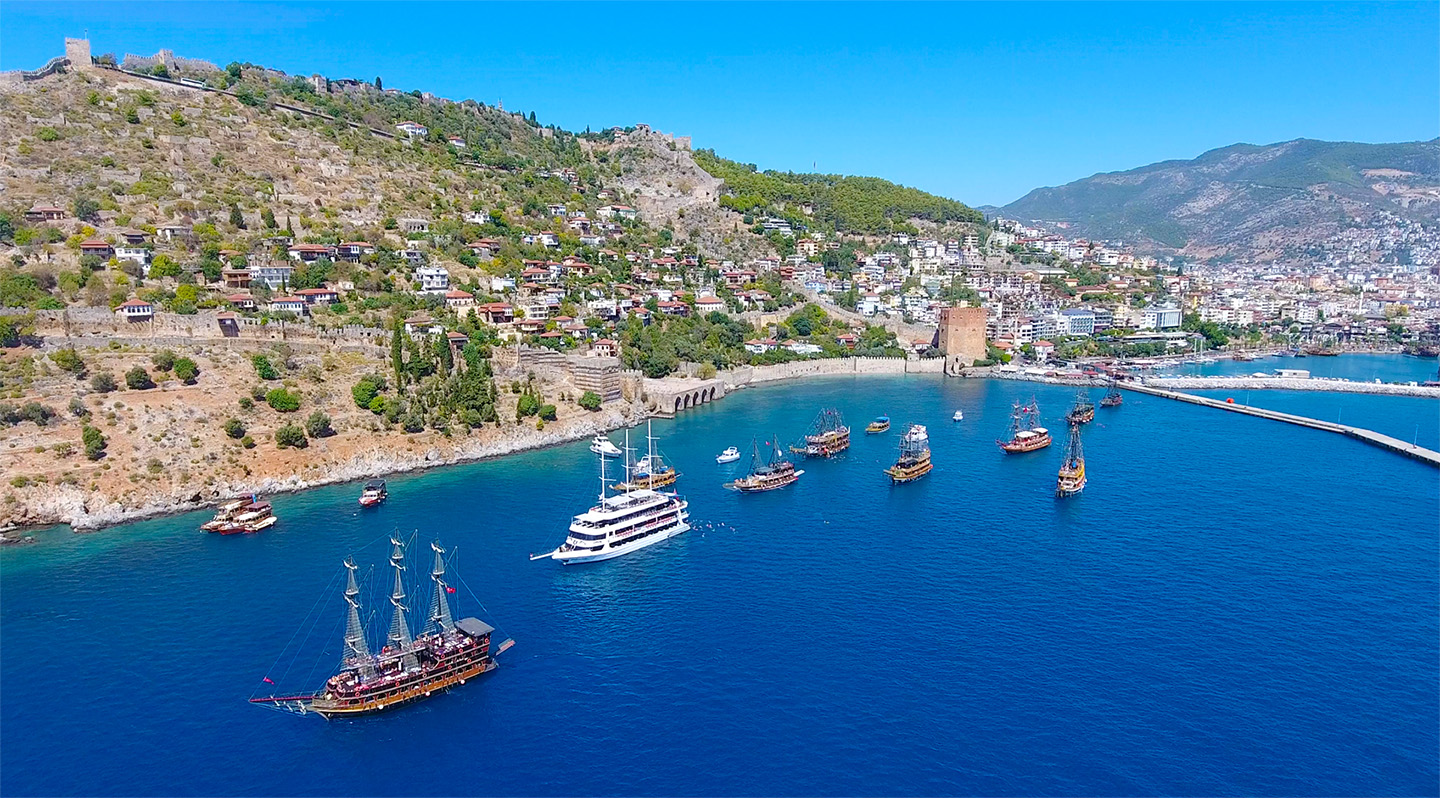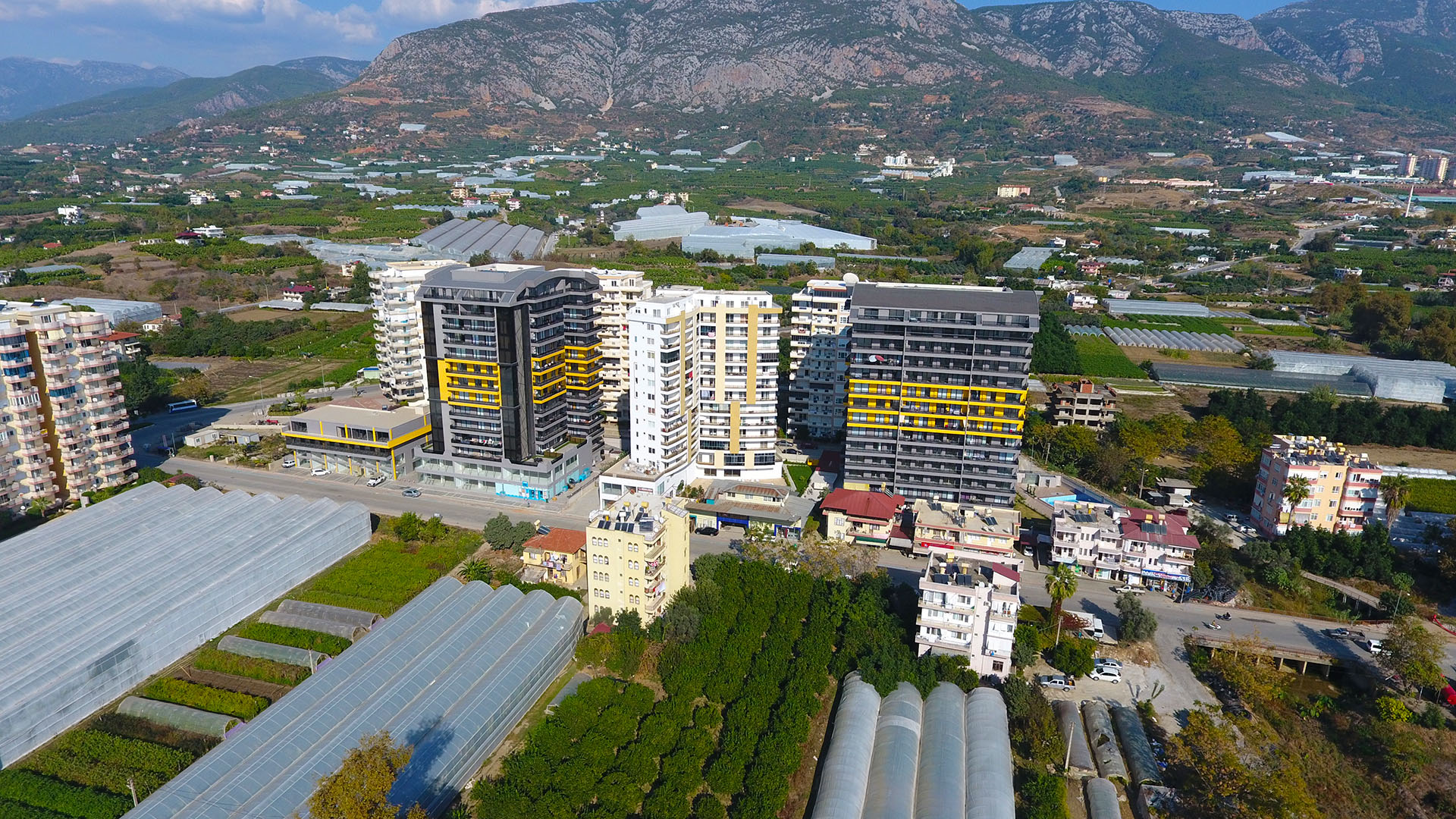Alanya
- Ana Sayfa
- Alanya
RÜYA ŞEHİR
ALANYA
Alanya Türkiye'nin Akdeniz kıyısında yer alan Antalya ilinde bir sahil beldesidir. İl merkezine yaklaşık 133 km uzaklıkta bulunan ilçenin etrafını Toros Dağları çevreliyor ve bu da kendine has iklimi tamamlıyor. Türkiye'nin güney kıyısında yer alan Alanya, 1.598,51 km² yüzölçümüne sahiptir. 2018 yılı verilerine göre yaklaşık nüfusu 327.503'tür. Alanya Gazipaşa Hava AlanıAlanya'ya 45 kilometre uzaklıkta bulunan 2012 yılında faaliyete geçmiştir.
Alanya is called the pearl of the Turkish Riviera. Mediterranean climate features are observed in the region. The winters are warm and the summers are hot. The sun shines through about 330 days of the year, and it is one of the main reasons why many people choose the city as a place to live or a holiday, with its clean sea and perfect beaches with blue flags. The city, which undertakes nine percent of the country’s tourism, has a share of thirty percent in the purchase of property by foreigners in Turkey. Tourism, especially after 1958, started to develop and became the most effective business line in the district, and this caused the population increase in the region. The number of people permanently residing in Alanya is increasing day by day. In addition, thanks to its warm climate, it is suitable for many sports and cultural activities. The mayor of the district is Adem Murat Yücel, who was elected in the local elections of 30 March 2014.
The city, which is in the form of a small peninsula in the coastal parts of the Mediterranean in terms of its strategic location, is located in the border region between the Taurus Mountains and the Mediterranean. Throughout history, Alanya has served as an important fortress in the Mediterranean for empires such as Egypt, Rome, Byzantium, Seljuk and Ottoman. During the Seljuk period, the region under the rule of Alaeddin Keykubad I gained a geopolitical importance. Red Tower, shipyard and Alanya Castle, which are the symbols of the city today, were built in this period.
History
Alanya is a historical city of rare beauty that hosted pirates in ancient times, feudal lords in the Byzantine period and finally rose to the capital during the Anatolian Seljuk period. In the researches (Kadıini Cave-1957), it was understood that the first settlement dates back to the Upper Palaeotic Period, 20 thousand years ago. Since it was located on the line between Pamphylia and Cilicia in ancient times, it was sometimes referred to as Pamphylia and sometimes as Cilicia. According to Herodotus, the people of this region are descendants of the people who dispersed to Anatolia after the Trojan War.
Its first known name in history is Coracesium. It was under the invasion of the Persians in the 4th century BC. It later became a haven for pirates. In 139 BC, the Seleucid Empire invaded the city. But even after that, the city could not get rid of being a shelter for pirates. The city, which was annexed to the territory of the Roman Empire by the Roman commander Magnus Pompeius in 65 BC, became Kalonoros, meaning “beautiful mountain” in the Byzantine period with the collapse of Rome.
After the Crusader armies established the Latin Empire in Istanbul in 1204, a vacuum of authority arose in Anatolia. Kyr Vart, a feudal lord, established dominance in Kalonoros on behalf of the Armenian Kingdom of Cilicia.
The city was captured by the Anatolian Seljuk Sultan Alaaddin Keykubat in 1221. Sultan Alaaddin Keykubat married the daughter of the lord Kyr Vart, had the city renovated and made it the winter capital. He named the city as Alaiye, which means the city of Sultan Alaaddin. During the reign of Alaaddin Keykubat, the city lived its heyday. Today’s castle, shipyard and many of the structures still standing are from that period.
As a result of the dissolution of the Anatolian Seljuks in 1300, the city came under the rule of the Karamanoğlu Principality. Karamanoğulları, based in Konya, sold the city to the Mamluk Sultanate of Egypt for 5 thousand gold in 1427.
Finally, with the establishment of unity in Anatolia and the emergence of the Ottoman Principality, Alaiye was included in the territory of the Ottoman State in 1471 by Gedik Ahmet Pasha, one of the commanders of Fatih Sultan Mehmet.
During the Ottoman Empire, Alaiye was first connected to the Province of Cyprus (1571), then the sanjak of the Konya Province (1864), then the sanjak of Antalya (1868), and finally the district of Antalya in 1871.
In 1931, Mustafa Kemal Atatürk visited Alaiye even though it was not in his program, and in response to this gesture, the mayor of the time, Hüseyin Hacıkadiroğlu, sent a telegram on behalf of the people of Alaiye, conveying the love, respect and devotion of the people of Alaiye to the ship Atatürk was traveling on after the visit. However, since all of the telegrams sent from land to the ship at that time were transmitted over Çanakkale, the name of Alaiye was mistakenly written as Alanya in the telegram that reached Atatürk. Realizing this, Atatürk gave the order to change the name of Sultan Alaaddin’s city to Alanya. In the Republican era, the city was named Alanya after that by the order of Mustafa Kemal Atatürk.
Social Life
District; Although it is a holiday destination, the lively life does not end with the end of the season. All shops, cafes, restaurants, hospitals and everything else that makes our life more comfortable in winter are open. That is why many people buy apartments and villas near the sea in Alanya, not only for vacation, but also for residence.
You don’t have to worry about the language barrier in this area. Natives are true polyglots. They speak English, German, Dutch, Persian, Russian, and other languages, and if you meet a local who doesn’t speak a foreign language, which is extremely rare, they will surely find someone who can help you.
The city is constantly evolving; new complexes are built, schools and hospitals are opened, beaches are improved, etc. The mayor of the town treats Alanya with great care and respect, like all other city dwellers. He was elected as the Best Mayor of Turkey in 2018.
The district is very environmentally friendly. There are no harmful large industries in the immediate vicinity. There is only the sea, banana groves, mountain rivers and magnificent coniferous forests.
Another advantage of this beautiful city is the low cost of living. Fresh vegetables and fruits are always cheaper than in most European countries. The costs of real estate and different services are also quite affordable.
For many people, Alanya is a holiday destination and also a perfect dream place to live.
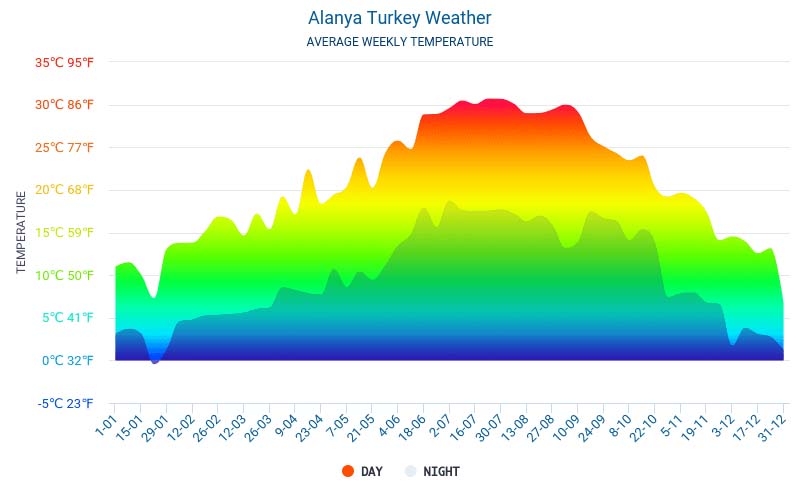
Climate
Alanya has a typical Mediterranean climate. The Mediterranean basin brings a lot of precipitation in the winter, and the summers are longer, hot and rainless compared to the winter. This situation inspired the slogan “the sun is smiling” in tourism.
Although not very frequent, heavy rains occur in the coastal areas throughout the year. The proximity of the Taurus Mountains to the sea causes fog and rainbows appear most mornings. On hot days, snow falls on the higher parts of the mountains, although not often. The average annual temperature of sea water in Alanya is 21.4 °C (71 °F), and 27.9 °C (82 °F) in August.
Economy
The main source of income in the district is agriculture and tourism. Alanya has an important share in the country’s tourism. Thanks to the tourism breakthrough that started in the 1980s, the city took its present form.
At first, apart hotels were concentrated in the district, today there are many types and types of touristic facilities, from facilities with a capacity of 1,000 people to gigantic facilities with a capacity of 3,500 people. According to 2019 data, a total of 45,756 foreign properties have been acquired in Alanya. The district hosts guests from more than 15 countries, mainly Russia, Germany, England, Ukraine, Netherlands, Finland, Sweden and Denmark. The city provides an opportunity for approximately 3.5 million domestic and foreign tourists to take a vacation annually. Banana, avocado and citrus fruits are mostly produced in the town, which has a great place in the country’s market in terms of agriculture. Greenhouse and citrus production are carried out with highly advanced techniques due to the hot climate of the region. Some of the products produced are unique to Alanya. Chief among these are avocados and bananas. The dimensions of Alanya banana are about the same as imported bananas and are sweeter than imported bananas. Thanks to agriculture and tourism, the city provides employment for approximately 100 thousand people annually.
Alanya is a region that adheres to its own traditions. Local people are called “Taurus Yörüks”. Nomad; Turkmens, who lived a nomadic life at the foot of the Taurus Mountains in the past, are called. The local people welcome their guests very warmly and very tolerantly. There are some dishes and traditional clothes of the Alanya region. “Gülüklü Soup”, which belongs to the traditions of Alanya region, is a patented dish.
This dish is made from marble-shaped meatballs, chicken and rice; It is served at weddings and special occasions. This soup recipe has survived to the present day without spoiling and it has been registered that it belongs to the Alanya region. The local clothes of Alanya, which are unique and suitable for the climate, are in the form of “cap, Alanya shalwar with red belt, waistcoat, silk shirt and shoe”.
The city is also very developed in terms of sports and education. It has two universities, one of which is private, and many sports facilities, two of which are large. Alanya district in professional leagues; Alanyaspor football team in the Super League, Alanya Kestelspor football team in the 3rd League and Alanya Demirspor women’s football teams in the Women’s 3rd League, as well as Alanya Belediyespor in the Turkish Men’s Volleyball First League, men’s volleyball team and ALKU SK men’s handball team, which is in the Turkish Men’s Handball 2nd League. The biggest sports complex in the district with a capacity of 15,000 fans.
Bahçeşehir Schools Stadium.
To reach more historical places to visit; https://www.alanya.bel.tr/S/403/Tarihi-Yerler
© All Copyright 2022 AYDEMİR GROUP

